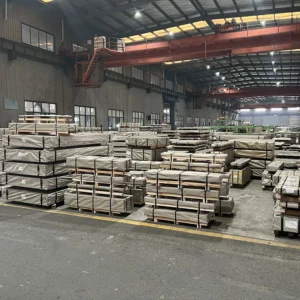Global Advancements in Cold Rolled Electrical Steel: Technology, Trends, and Exports
Image Metadata
- Alt Text: Cold rolled electrical steel production line inside a modern steel plant
- Title: Cold Rolled Electrical Steel Manufacturing Process
- Caption: Advanced machinery processing cold rolled electrical steel sheets for global export
- Description: Image showing the precision-controlled production of cold rolled electrical steel in a high-capacity industrial facility
2000-Word Blog:
Global Advancements in Cold Rolled Electrical Steel: Technology, Trends, and Exports
In the rapidly evolving landscape of energy-efficient solutions and smart grids, cold rolled electrical steel (CRES) has emerged as a cornerstone material. Its unique properties—high permeability, low core loss, and exceptional magnetic performance—make it an essential component in modern electrical devices, particularly transformers, motors, and generators. As global demand for energy conservation and renewable integration intensifies, so too does the relevance of this specialized steel product.
What is Cold Rolled Electrical Steel?
Cold rolled electrical steel refers to a category of steel that undergoes cold rolling to achieve enhanced surface finish, thickness precision, and uniformity. The cold rolling process involves reducing the steel’s thickness at room temperature, followed by controlled annealing and coating procedures. This process ensures superior magnetic characteristics, allowing for reduced energy loss during the transformation and transmission of electric current.
There are two primary types of electrical steel: grain-oriented (GO) and non-grain-oriented (NGO). While both have significant applications, GO steel is predominantly used in transformers due to its directional magnetic properties. In contrast, NGO variants are more suitable for motors and generators.
The Role of Cold Rolled Electrical Steel in Modern Energy Infrastructure
In both developed and emerging markets, the push toward sustainable energy systems has accelerated the adoption of cold rolled electrical steel. Its role in transformers, especially distribution and power transformers, cannot be overstated. With the integration of renewable energy sources such as solar and wind into national grids, the need for efficient electrical steel that minimizes core loss is becoming increasingly critical.
In electric vehicles (EVs), cold rolled electrical steel contributes significantly to motor performance, energy efficiency, and overall vehicle range. The material’s ability to reduce eddy current loss directly enhances motor output, a key consideration in automotive electrification.
Trends Shaping the Cold Rolled Electrical Steel Market
- Decarbonization and Electrification
Governments and corporations globally are committing to carbon neutrality. Cold rolled electrical steel plays a central role in electrification projects, from railway systems to green building infrastructure. - Rising Demand for Transformers and EVs
According to recent industry data, the global electrical steel market is expected to grow significantly through 2030, driven by the increased adoption of electric vehicles and expansion of grid infrastructure in Asia, the Middle East, and North America. - Technological Innovations
The latest production methods include high-speed cold rolling mills with precise process control systems, enabling steel manufacturers to produce thinner, more efficient grades of electrical steel. - Sustainable Coating Practices
In response to environmental regulations, manufacturers are shifting towards eco-friendly coating techniques such as chrome-free insulation coatings, which enhance electrical resistance and reduce environmental impact.
Export Outlook: Opportunities in the Middle East and Europe
Cold rolled electrical steel exports have seen a significant uptick in demand from the Middle East and Europe. Nations in the Gulf Cooperation Council (GCC), particularly Saudi Arabia and the UAE, are investing in smart cities and renewable power plants—initiatives that require high-performance transformers and energy-efficient motors.
Meanwhile, the European Union’s Green Deal and electrification mandates have prompted infrastructure upgrades across member states. With aging grids in need of modernization, the demand for cold rolled electrical steel in power equipment manufacturing is expected to surge.
Quality Standards and Certifications
Exporting high-quality cold rolled electrical steel requires compliance with international standards such as:
- IEC 60404 for magnetic materials
- ASTM A876/A876M for non-oriented grades
- JIS C2552 in the Japanese market
Certifications and third-party testing not only build credibility but also open access to highly regulated markets.
Manufacturing Capabilities in China
China has rapidly positioned itself as a global leader in cold rolled electrical steel production. With robust supply chains, state-of-the-art facilities, and strategic port access, Chinese manufacturers are increasingly becoming preferred suppliers to clients in the Middle East and Europe.
Many Chinese companies have invested in new annealing lines, coating technologies, and logistics improvements to meet rising international demand. These advancements allow them to produce specialized grades suitable for high-frequency applications and high-efficiency transformers.
Challenges and Solutions in Global Trade
While the opportunities are vast, exporting cold rolled electrical steel also comes with challenges:
- Tariffs and Trade Barriers: Trade disputes and regional tariffs can complicate logistics and pricing strategies.
- Supply Chain Disruptions: Global events—such as pandemics or political instability—can impact raw material availability and shipping timelines.
- Certification Delays: Securing testing and quality certificates for each destination can slow time to market.
To overcome these challenges, successful exporters invest in localized customer support, flexible shipping arrangements, and strong partnerships with customs brokers and certification agencies.
Conclusion
Cold rolled electrical steel is not just a product—it is a key enabler of the global transition to sustainable and intelligent energy systems. As industries continue to evolve, the demand for this specialized steel will remain strong across Europe and the Middle East.
Manufacturers and exporters that prioritize innovation, efficiency, and compliance are best positioned to benefit from the rising demand. Whether it’s powering a smart city in Dubai or upgrading a wind farm in Germany, cold rolled electrical steel will remain at the heart of global electrification efforts for decades to come.
Would you like this turned into a downloadable Word document or webpage layout?




